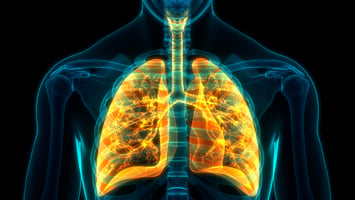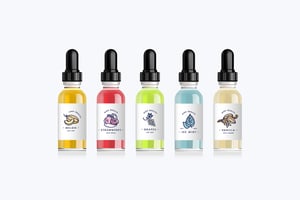Aligned with Broughton’s belief in realizing harm reduction, Principal Scientist, Frazer Lowe discusses a scientific paper that he co-authored on ‘Oxidative stress Leading to Decreased Lung Function'...
Clinical trials, timescales, and supplementing PMTA submissions
Nicotine

Aug 9, 2021 | Published by Dr. Ian Fearon
Nicotine
With many companies considering supplementing their Premarket Tobacco Product Application (PMTA) submissions, we asked industry expert, Dr. Ian Fearon, to explain the process followed when running clinical trials and the likely timescales.
Successful PMTA submissions
Clinical studies are of vital importance to a successful PMTA submission; information gained from such studies can help to inform both individual and population-level risk assessments. Food and Drug Administration (FDA) has recognized however that long-term studies are not required for a PMTA submission, and instead, manufacturers can review the scientific literature to provide information on long-term effects, and particularly the long-term health impacts of Electronic Nicotine Delivery Systems (ENDS) use.
Manufacturers do however need to submit information from short-term studies, of which there are 2 different types:
Assessment of abuse liability
Assessment of abuse liability (also known as dependence potential or addictiveness). Typically, this type of study involves recruiting adult smokers and asking them to either smoke a cigarette or use a candidate ENDS product in a clinical laboratory. Subjects use a single product on each study day, usually in a randomized crossover fashion to minimize any effects of the sequence of product use. Product use involves either taking a defined number of puffs with a set spacing between puffs, 10 puffs over 4.5 minutes is common. Some studies either additionally, or instead of defined puffing, use an ad libitum period of use in which subjects smoke a cigarette taking as many puffs as they want for 1-2 hours. Before, during and after product use of any type, blood samples are taken to assess nicotine levels and various questionnaires are completed by subjects so they can indicate how they feel about using the product in terms of liking, satisfaction, intent to use again, and any other effects of product use. It is important to note that there is a limit on the number of products that can be assessed in this type of study, which is typically 7 ENDS products; this is due to a large amount of blood being drawn from the subjects during the study.Assessment of exposure
Assessment of exposure. This type of study also involves recruiting smoker subjects. These subjects are asked to smoke cigarettes for a baseline assessment of exposure, after which they are randomly assigned to either remain smoking cigarettes, switch to using the candidate ENDS product, or quit using nicotine altogether. In this ‘follow-up’ period, assessments of exposure are also made. These studies are typically performed with the subjects confined to a clinical site so that product use can be controlled. The baseline period is usually 2 days, and for one of these days, all the urine passed by the subjects is collected so that biomarkers of exposure in the urine can be assessed. The follow-up period is typically 5 days and again at the end of this period urine samples are collected for the biomarker of exposure analysis.
Running these studies involves using specialized clinical sites that are familiar with running tobacco product clinical studies. Writing the study protocol (a set of instructions telling the clinic how to perform the study) can take a month since the study requirements are complex and need to be accurately described. The protocol, along with the informed consent form which all subjects will sign, is then submitted for review by an ethics committee (in the US this is known as an Institutional Review Board or IRB). This committee is comprised of medical experts and laypeople, and they will assess the ethics of running the study by looking at aspects such as are the subjects exposed to any unnecessary risk, are their rights properly protected, and are the aims of the study appropriate and can be met by the study design. Ethics committee review usually takes 2-4 weeks.
Timescales
Once ethics approval has been gained, the clinical site can start recruiting. For an abuse liability study this takes 2-4 weeks as subject numbers are small (typically 18-24 subjects). For exposure studies, this takes longer, perhaps 4-8 weeks, since larger numbers of subjects (usually >100) need to be recruited.
The clinical phase of the study takes 2-4 weeks for abuse liability assessments and 2-3 months for exposure studies; this is because of the much greater length of exposure studies due to the long confinement period for subjects.
The final step is the analysis of biological samples, which again must be conducted by specialist laboratories with expertise in measuring nicotine and biomarkers of exposure. For an abuse liability assessment, this can take 1-2 weeks, while for biomarker analyses it can take 1-2 months. After this, the data and statistical analyses are compiled into a study report which takes 2-4 weeks to develop.
Overall, an abuse liability assessment can typically be performed in 3-4 months, while an exposure assessment takes 6-9 months. It should also be noted that the ideal process of developing a clinical study involves seeking a scientific advisory meeting with FDA, and this can take 3-4 months to gain FDA’s advice and feedback on the study design and objectives.
To find out more contact us to arrange a meeting.
Can we help you?
Broughton have deep CRO capabilities and an experienced team of scientific and regulatory professionals to manage full service global regulatory projects. Our knowledge of global regulatory pathways offers significant insights that can be incorporated into your project plans. Our mission is to accelerate safer nicotine-delivery products to market; advancing a smoke-free future.
Book a meeting with us today to discuss your requirements.



